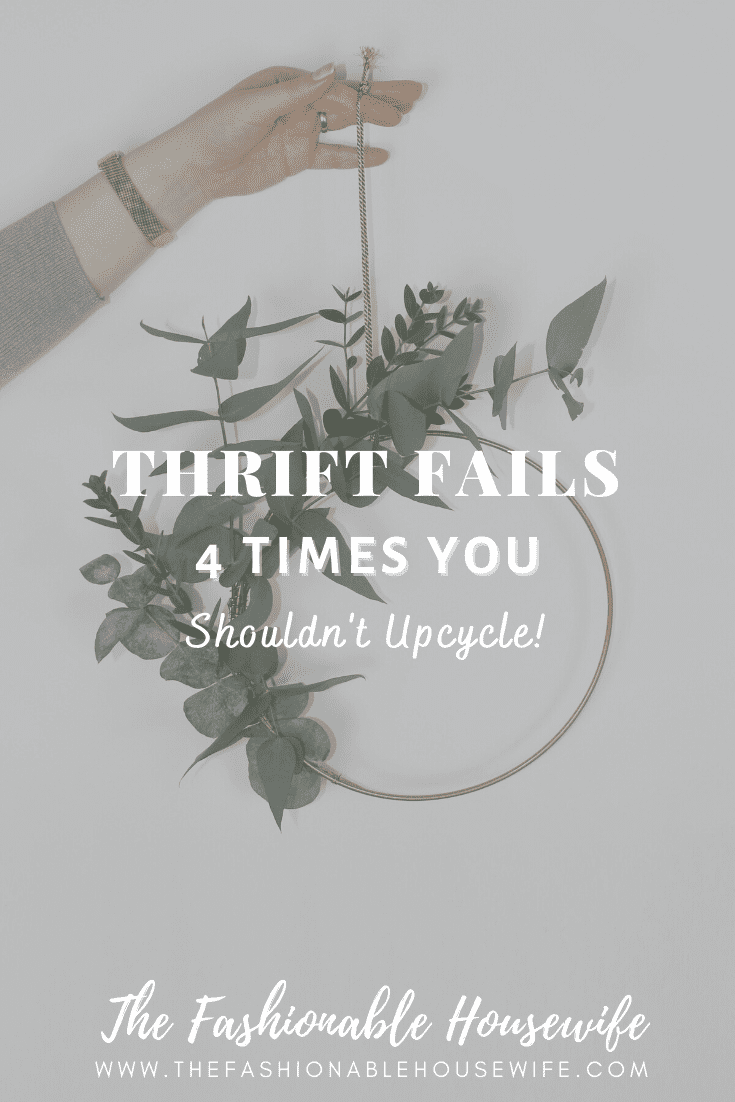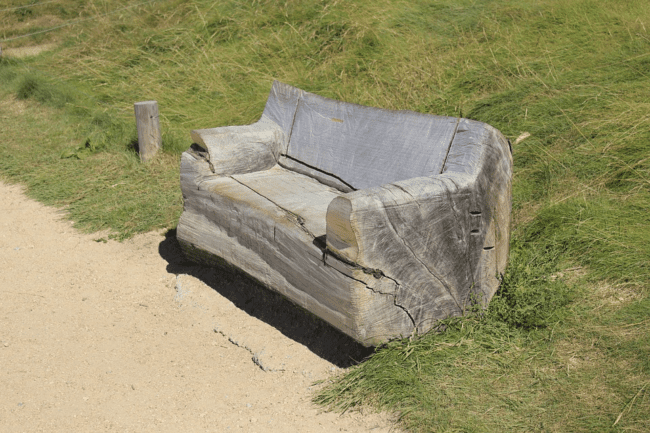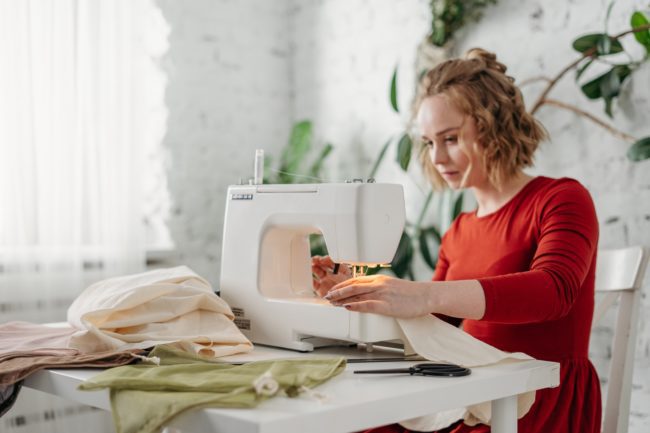Thrift Fails: 4 Times You Shouldn’t Upcycle!
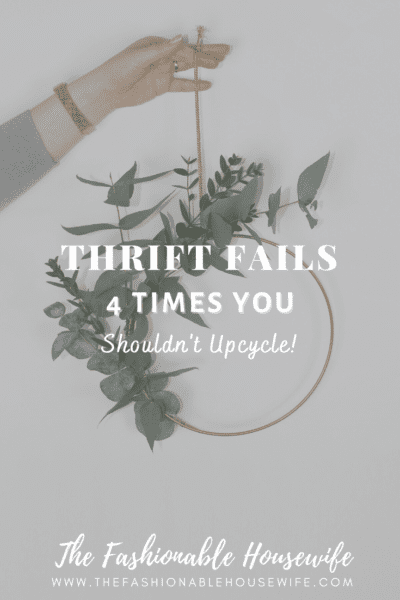
Upcycling is a popular way for homeowners to transform their decor on a budget. It’s increasingly used by property owners because, as well as being thrifty and saving money, it adds character to your interiors. Plus, you can’t beat the sense of satisfaction when you look at something you’ve created from scratch!
Upcycling could be in your mind every time you attempt to change the interior or exterior of your house. After all, it’s an affordable method that’s accessible to everyone, as long as you are ready to get creative and roll up your sleeves. However, you can have too much of a good thing, especially when it comes to taking something old and giving it a new lease of life.
Like everything, there are pros and cons of upcycling, and the latter can outweigh the former. It’s all about the scenario and how the circumstances affect the project. Sure, you can find solutions, but they aren’t always available.
To find out more about the times when upcycling isn’t a savvy move, you should keep reading. Below, you’ll find an outline of the top four mistakes and why they are tough to overcome, even with a dash of motivation and a sprinkle of hard work.
Not Priming Materials
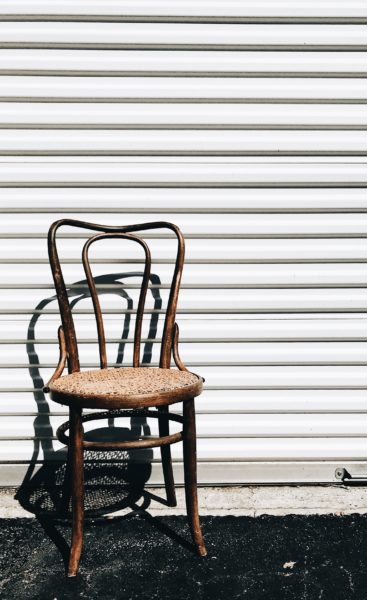
The whole point of upcycling is to take an item and turn into something new. By doing this, you can implement personality into your home, which is a feature that every property requires. Unfortunately, the fact that an old belonging has had another use comes into play during the upcycling process.
Usually, furniture, one of the most popular upcycling projects, is coated in chemicals that prevent it from rusting or eroding. Therefore, these need removing as strong substances can cause a reaction, such as forcing paint to peel off or varnish not to take. In extreme situations, they are dangerous to your health.
A primer is a chemical that prepares the piece so that you can upcycle it without worrying about any of the above. The problem is that not all items will take a primer. Wood will because it’s natural, yet metal or plastic could reject it, leaving you in a sticky spot. You can sand it down and hope for the best, yet there’s a high chance that the project will fail.
So, if you can’t add a primer for whatever reason, and the item requires it, you should consider using a different piece of furniture as your hard work could end up going down the drain!
Using Indoor Materials Outside
Updating the garden is a fantastic way to create a relaxing space while simultaneously adding value to your home. There are tons of ways to boost its resale price, but none are as fun or as rewarding as giving your garden a makeover, and upcycling is ideal for the job. After all, incorporating furniture is a brilliant way to use space and add vibrancy.
What you need to be wary of is using the wrong fabrics in your garden. Internal materials don’t have to cope with the elements, which means they take a while to break down. External furniture, on the other hand, has to be durable enough to deal with the wind, rain, and sunlight. Unfortunately, cotton, polyester, and nylon, the three most commonly found interior fabrics, are vulnerable outdoors.
Rather than upcycling and getting a week or two out of an old armchair or sofa, it would be better to find the best outdoor furniture fabric as it will save you time and money in the long run. It’s tempting to think that your indoor fabric furniture will last, but plenty of property owners assume the same and 99% of them end up disappointed.
Cut out the inevitable disappointment by making sure the item you upcycle is outdoor-ready, and if it isn’t, you should find a better project for it.
Thinking Upcycling Solves Everything
It doesn’t. Upcycling works, but only when your belongings aren’t beyond repair. Sometimes, you have to admit that no matter what you do, you can’t salvage your “valuables” from the garbage truck. Clothes are prime examples due to the material.
As cotton and nylon ages, it doesn’t do it with grace. Instead, the color starts to fade and different shades begin to leave unappealing patches all over the fabric. Taking an old shirt or pair of jeans and cutting them into a tank top or shorts won’t work if the stains are stubborn. Yes, you will have a new item for your wardrobe, yet it’ll still be dirty!
As well as the color, you must consider the smell. Sadly, some clothes are too old for upcycling and need removing from your closet as soon as possible. Don’t worry, though, as you can donate them to a nearby Goodwill store or a local charity.
They don’t have to go to waste. One person’s trash is another person’s treasure!
Attempting Too Much As A Newbie
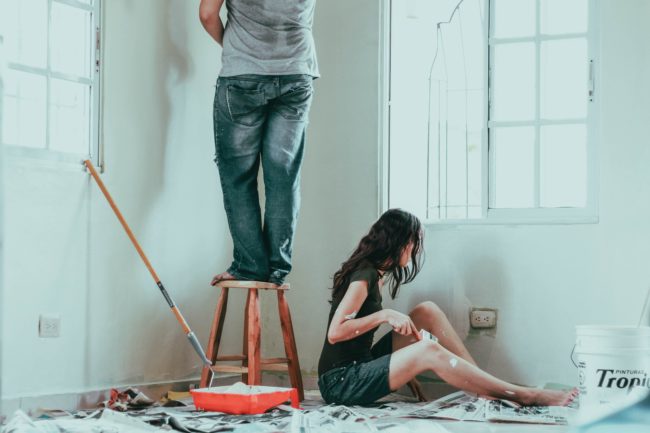
None of the above might apply to your craft project. You could have the ultimate item that will work in any situation, regardless. That means you can give the task a try and see what happens, right? No!
Just because the item you want to upcycle is eligible doesn’t mean you have the skills to pull off the job. Often, what appears to be a small project turns out to be something pretty big. Also, you’ve got to remember that there are times when DIY is inappropriate.
If you have to deal with water or electricity, it’s better to leave the role to a person who understands how to solve the problem quickly and efficiently without putting anyone in danger. You may think that there isn’t a health and safety issue, yet a small shock or leak is enough to make you think otherwise!
Considering that experts point out that 60% of the jobs they attend are often bodged beforehand, it’s more common to get hurt during DIY than you know.
Why would you put your wellbeing in jeopardy when you don’t have the knowledge or experience?

